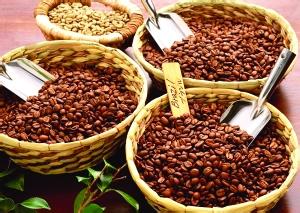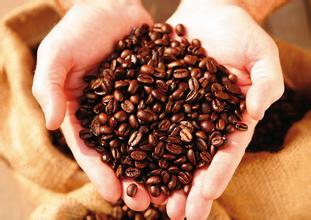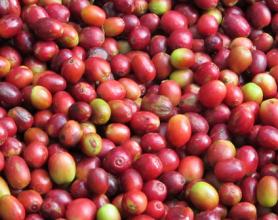Flavor description of Brazilian Mojiana Coffee beans introduction of varieties in taste producing areas
Flavor description of Brazilian Mojiana Coffee beans introduction of varieties in taste producing areas
Brazil has also proved to be able to produce gourmet coffee and small quantities of coffee, and the local boutique coffee can not only be provided by small-scale coffee farmers. The main coffee producing areas in Brazil are Sulde Minas South Minas, Matas de Minas Minas South East Mountain Forest, Cerrado Hirado, the north-central mausoleum of Chapadas de Minas Minas, Mogiana, Paran á Parana and Bahia Bachia. There are both traditional varieties and variants, such as Bourbon, Mondo Novo Mondonovo, Icat ú Ikatu, Kaduai, Iapar, cultivatedCathel Coffee, which was first introduced to Brazil in the early 18th century. In 1727, the Brazilian government sent a personable army officer to secretly bring coffee seeds from French Gaiana to Brazil on the grounds of mediating border disputes. At that time, the governor's wife of French Gayana was said to be fascinated by this officer. So he secretly brought coffee tree seeds to him at the farewell dinner. At present, 2 million hectares of land in Brazil is used to grow coffee, with a maximum of more than 70% being Arabica. These beans will eventually be sent to large bakers in various countries, also known as Santos (in the name of the port of export santos, not the producing area).
Minas has the largest number and is the backbone of Brazilian boutique coffee. As for the north-central mausoleum of Minas (Chapada de Minas) is not a boutique producing area, mostly for general commercial beans. To sum up, South Minas, the central and western Mesa of Minas (Serrado) and the higher forest areas in the southeast can all be called the boutique producing areas of Minas province. Brazil is vividly compared to the "giant" and "monarch" of the coffee world. There are about 3.97 billion coffee trees there, and small farmers now grow 75% of Brazil's total coffee production. The number of coffee producers in Brazil is twice or even three times that of Colombia, the second largest coffee producer in the world.
Unlike in the past, Brazil's economy is now less dependent on coffee, which accounts for only 8% to 10% of GDP. Before World War II, Brazil accounted for 50% or more of the world's coffee production, and now it is close to 30%. But the country's impact on the world's coffee, especially on coffee prices, is significant. For example, two frost disasters in 1994 caused a sharp rise in global coffee prices.
Since the introduction of coffee trees from French Guiana (Guyana) in 1720, coffee production has gradually become a science. Before 1990, the Brazilian government carried out strict monitoring of the coffee industry, with both strict intervention and price protection measures, and the state has been implementing minimum price protection measures for farmers, resulting in coffee overproduction. Before World War II, the remaining stock reached 78 million bags, which had to be burned by fire or thrown into the water to destroy.

Important Notice :
前街咖啡 FrontStreet Coffee has moved to new addredd:
FrontStreet Coffee Address: 315,Donghua East Road,GuangZhou
Tel:020 38364473
- Prev

Uganda coffee beans taste grinding scale varieties of production area processing method Manor introduction
The quality grade of coffee in Uganda: Bugisu AA (only 4% of the country's total production) Bugisu A Wago Wugar A (all of which belong to washing treatment) and a small amount of sun-dried beans Drugar Bugisu AA where AA indicates the grade of coffee, representing the
- Next

Description of Taste and Flavor of Yunnan Tieka Coffee beans introduction to the producing areas of Grinding scale varieties
Yunnan Tieka coffee beans taste and flavor description grinding scale variety production area introduces the environmental problems of coffee cultivation, although it can reach the hot area standard, it is far away from the equator, the problem of evaporation, and the large-scale Yunnan coffee planting area is less than 1100m above sea level. in recent years, the severe drought in Yunnan, as well as the frost period in the producing areas, all make it impossible to guarantee the cultivation of coffee, which directly affects the production of coffee.
Related
- Detailed explanation of Jadeite planting Land in Panamanian Jadeite Manor introduction to the grading system of Jadeite competitive bidding, Red bid, Green bid and Rose Summer
- Story of Coffee planting in Brenka region of Costa Rica Stonehenge Manor anaerobic heavy honey treatment of flavor mouth
- What's on the barrel of Blue Mountain Coffee beans?
- Can American coffee also pull flowers? How to use hot American style to pull out a good-looking pattern?
- Can you make a cold extract with coffee beans? What is the right proportion for cold-extracted coffee formula?
- Indonesian PWN Gold Mandrine Coffee Origin Features Flavor How to Chong? Mandolin coffee is American.
- A brief introduction to the flavor characteristics of Brazilian yellow bourbon coffee beans
- What is the effect of different water quality on the flavor of cold-extracted coffee? What kind of water is best for brewing coffee?
- Why do you think of Rose Summer whenever you mention Panamanian coffee?
- Introduction to the characteristics of authentic blue mountain coffee bean producing areas? What is the CIB Coffee Authority in Jamaica?

